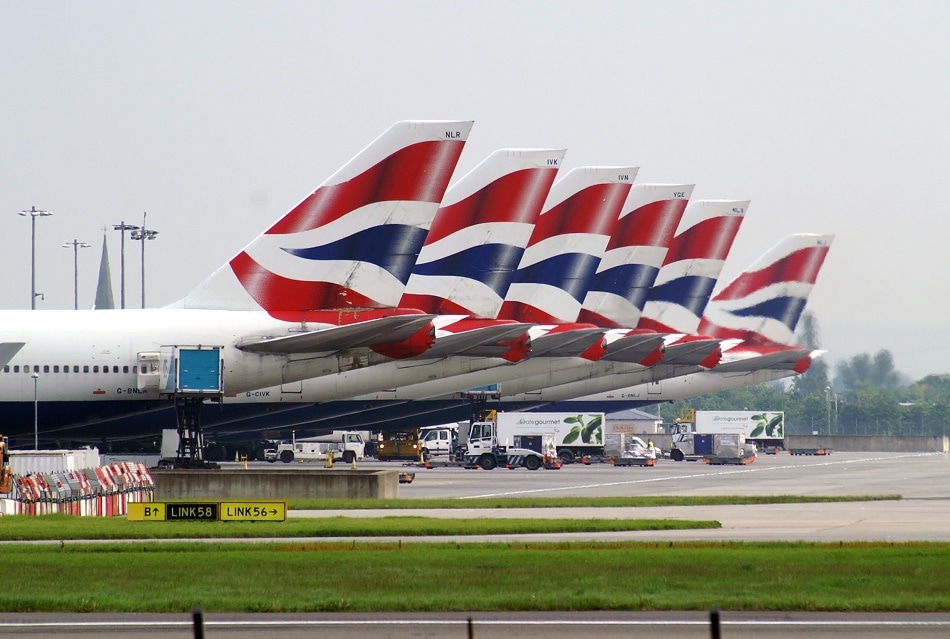
Image Credit: Ondrej Zabransky/Shutterstock.com
Leading UK airline British Airways announced this month that it is exploring the possibility of using 3D printing to create aircraft parts. The company believes the use of 3D printed parts will be instrumental in transforming the aviation industry, reducing delays, costs and even emissions.
The 3D Printed Plane Follows The Launch Of The First Train With 3D Printed Parts
Following on from the company’s 100 year anniversary "BA2119: Flight of the Future" program, British Airways will be launching a new project. It will investigate the efficiency of 3D printing aircraft parts, specifically for manufacturing various cabin parts rather than mechanical parts.
The news comes just months after the maiden voyage of the country’s first train with incorporated 3D printed parts. The train belonged to one of the UK’s leading rail companies, Chiltern Railways, who believe that 3D printing will play a vital role in the future of the rail industry. They predict that it will bring down costs and reduce lead times associated with replacing parts as they can be printed to order in low quantities, even potentially on-site.
The company also sees the benefits of reducing production waste and being able to respond rapidly when vehicles are vandalized, reducing vehicle downtime. The advent of the use of 3D printing in the aviation industry is likely to bring similar benefits, having a "transformative" impact on the industry.
3D Printing To Revolutionize Aviation
Technology experts at British Airways predict that 3D printing has limitless potential in the field of aviation, they believe that incorporating the technology into aviation manufacturing processes could transform the industry due to the profound advantages it brings.
The first parts to be printed in British Airways’ trial are expected to be non-essential cabin parts, such as pieces of tray tables, toilets, entertainment systems, and more. These parts are not essential to flight safety, however, they can impact the quality of the flight and contribute to unnecessary delays due to waiting for parts to be delivered when they become broken. 3D printers could eliminate this cause of delays by being ready to rapidly-produce parts on site.
Costs will also be brought down by the implementation of 3D printing, as parts will no longer have to be transported. In addition, the cost of producing the parts will be lower, as they can be printed on-demand with cheaper materials, rather than waiting for larger production runs necessary with traditional manufacturing methods.
Finally, British Airway’s initiative to begin using 3D printing as part of their manufacturing process will help the company arrive at their goal of net-zero carbon emissions by 2050. This is because printers can be used to create parts that match traditionally made parts in terms of strength, durability, and function, they will be able to utilize different materials which will enable them to weigh less.
Experts determine that parts made by 3D printing will be 55% lighter than conventionally made parts. This reduces the carbon dioxide emissions associated with air travel because the weight of the plane is related to the fuel burned, with heavier planes requiring more fuel. In fact, each kilogram of weight that is removed from an aircraft saves 25 tons of carbon dioxide emissions over the lifetime of the aircraft.
British Airways predicts that following success of their trial, they will begin using 3D printing to create a wider number of components for their aircraft, starting with cutlery, products for amenity kits - such as toothbrushes or combs; tray tables, aircraft windows, inflight entertainment screens, seats, baggage containers, circuit boards, and electrical switches and aircraft shells.
The project is likely to be the start of the widespread use of 3D printing in the aviation industry. Other major airlines are expected to follow suit to take advantage of the associated benefits, gaining them a competitive edge in the market.
Disclaimer: The views expressed here are those of the author expressed in their private capacity and do not necessarily represent the views of AZoM.com Limited T/A AZoNetwork the owner and operator of this website. This disclaimer forms part of the Terms and conditions of use of this website.